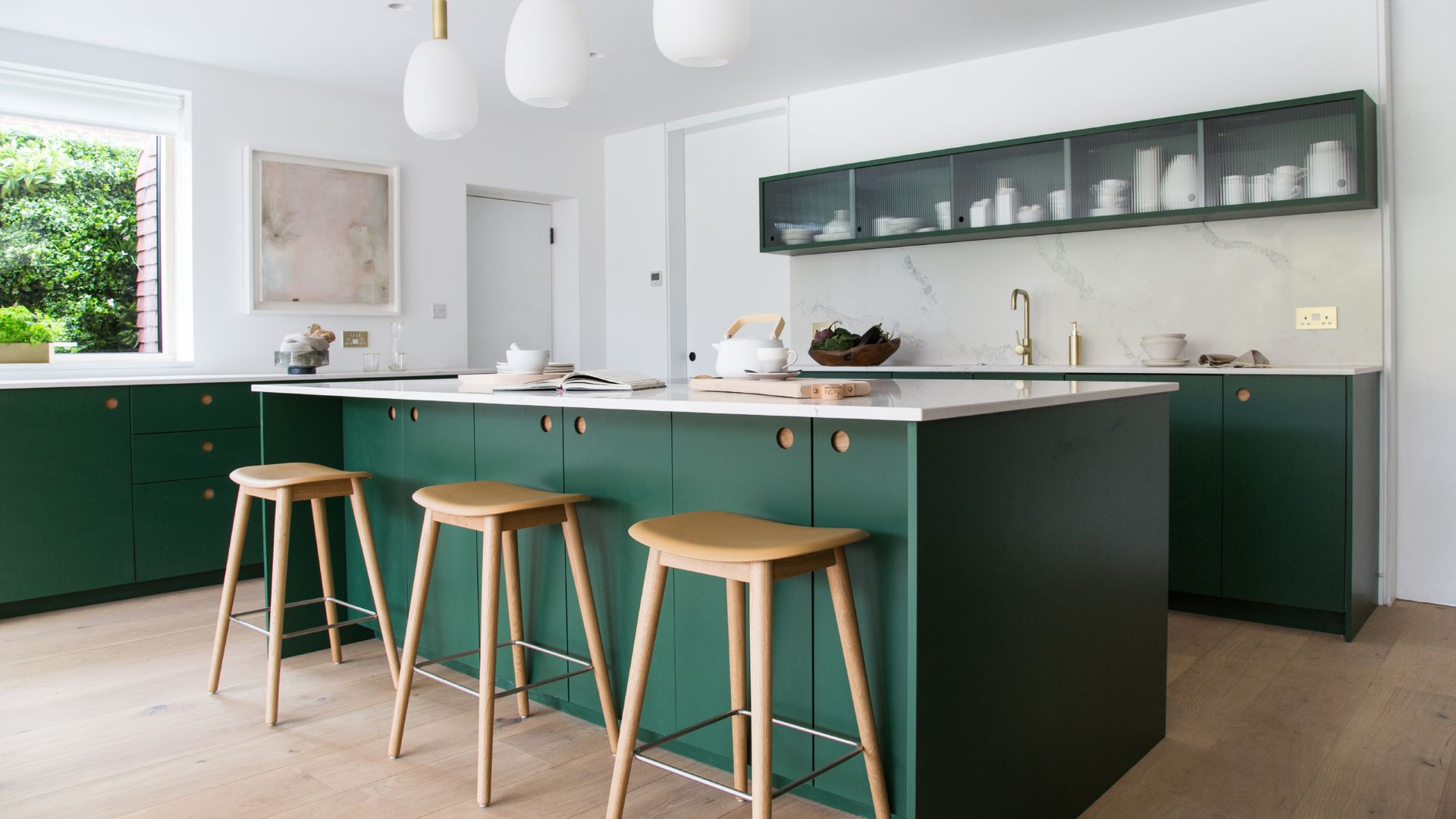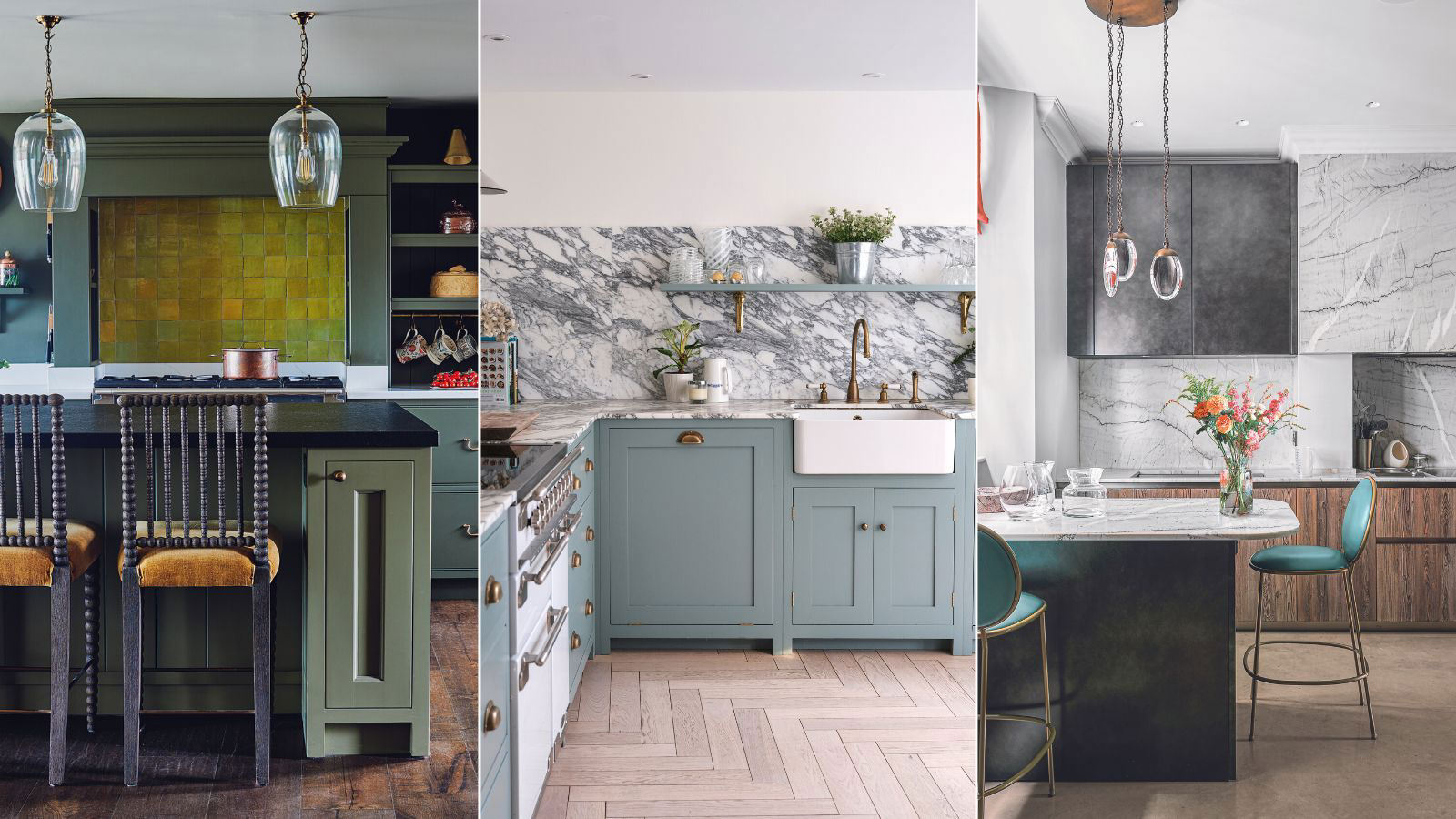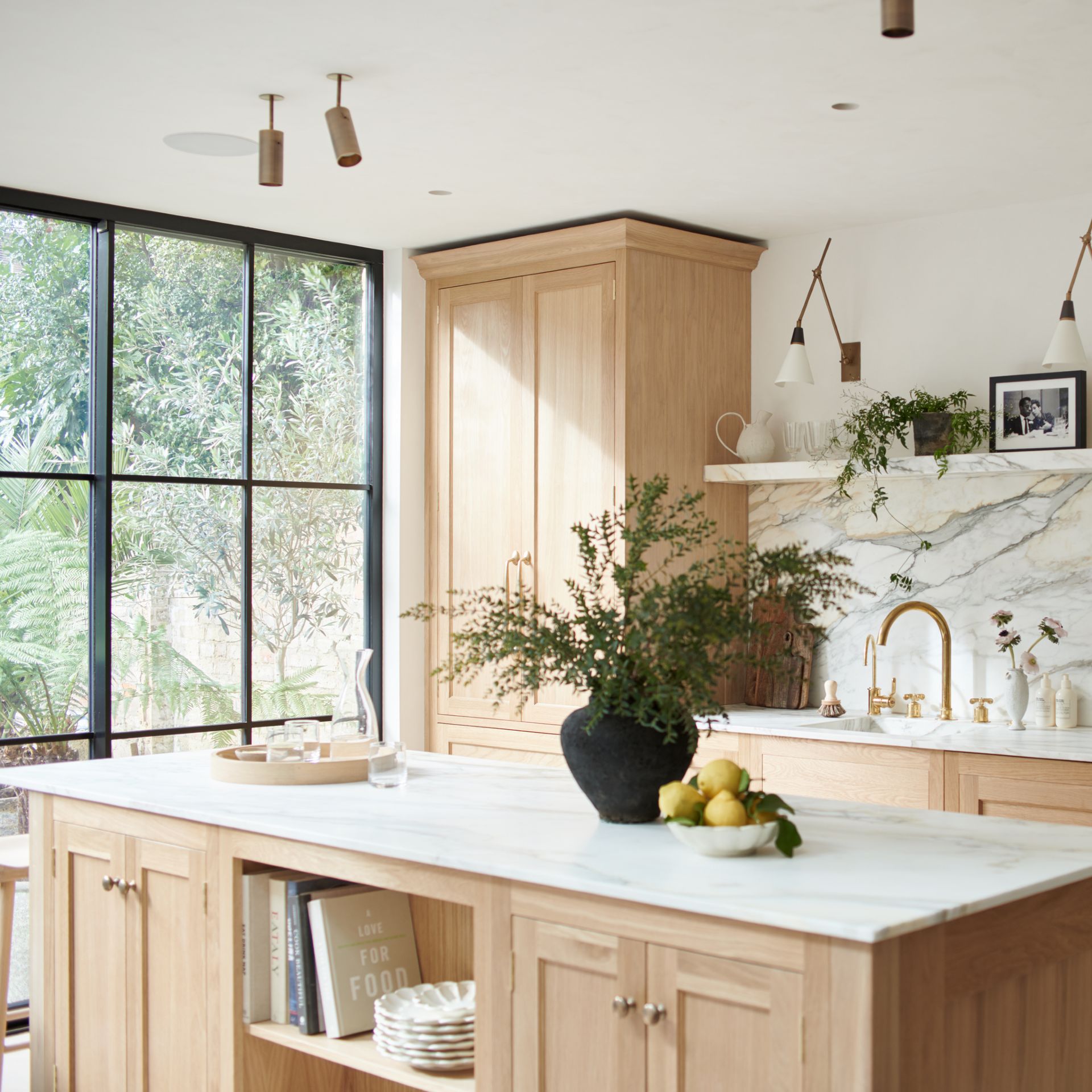Modern decorations for the kitchen encompass a wide spectrum of design aesthetics, emphasizing functionality, minimalism, and sleek lines. These decorations are designed to create a cohesive and stylish space that optimizes efficiency and visual appeal. A striking example of modern kitchen decoration is the use of floating shelves, which not only provide ample storage for kitchenware but also add a touch of elegance and simplicity to the overall design.
In modern kitchen decoration, the emphasis is on creating a seamless and harmonious environment that complements the architectural features of the space. Neutral color palettes, geometric patterns, and natural materials like wood and stone are often incorporated to achieve a clean and contemporary look. The use of sleek appliances and innovative storage solutions further enhances the functionality and aesthetic appeal of the kitchen.
As we delve into the realm of modern kitchen decorations, we will explore various design elements, color combinations, and innovative materials that can transform your kitchen into a stylish and functional space. From minimalist cabinetry to smart appliances, this article will provide you with insights and inspiration to create a kitchen that is both aesthetically pleasing and practical.
Modern Kitchen Decorations: Key Points
- Clean Lines & Minimalism
- Neutral Color Palettes
- Geometric Patterns
- Natural Materials
- Floating Shelves
- Smart Appliances
- Energy-Efficient Lighting
- Open Shelving
Modern kitchen decorations prioritize functionality and aesthetics, creating a cohesive and stylish space.
Clean Lines & Minimalism
Clean lines and minimalism are defining characteristics of modern kitchen decorations. This design approach emphasizes simplicity, functionality, and the elimination of unnecessary ornamentation. Kitchens adorned with clean lines feature sleek cabinetry, smooth countertops, and uncluttered surfaces, creating a streamlined and sophisticated look.
The beauty of clean lines lies in their ability to visually expand the, making even compact kitchens appear more spacious. The absence of excessive and intricate designs allows the eye to effortlessly navigate the space, creating a sense of order and tranquility. This design philosophy is particularly well-suited for modern kitchens, where efficiency and functionality are paramount.
Minimalism in kitchen decoration extends beyond aesthetics; it also promotes practicality and ease of maintenance. Smooth surfaces and uncluttered countertops are not only visually appealing but also easy to clean and disinfect, ensuring a hygienic and sanitary cooking environment. Additionally, the absence ofand unnecessary items reduces the accumulation of dust and clutter, making the kitchen more conducive to a clean and organized lifestyle.
To achieve a clean and minimalist look in your kitchen, consider the following tips:
- Opt for cabinetry with sleek, handleless .
- Choose countertops with smooth, non-porous surfaces that are easy to clean.
- Keep appliances hidden behind cabinet doors or integrated into the cabinetry.
- Minimize the number of decorative items and accessories on display.
- Utilize open shelving or floating shelves to create a sense of airiness and visual space.
By embracing clean lines and minimalism in your kitchen decoration, you can create a space that is both aesthetically pleasing and highly functional, allowing you to enjoy a modern and sophisticated cooking environment.
Neutral Color Palettes
Neutral color palettes play a pivotal role in modern kitchen decorations, contributing to the creation of elegant, timeless, and versatile spaces. Neutral colors, such as white, black, gray, beige, and navy, serve as the foundation upon which other design elements can be layered, creating a cohesive and sophisticated look.
- Simplicity and Elegance:
Neutral color palettes exude an air of simplicity and elegance, allowing the intrinsic beauty of materials and textures to take center stage. The absence of loud colors and patterns prevents visual clutter, creating a sense of serenity and order. - Timeless Appeal:
Neutral colors transcend fleeting trends and fads, ensuring that your kitchen remains stylish for years to come. Unlike bold colors, which can quickly become dated, neutral hues provide a solid foundation that can easily adapt to changing styles and personal preferences. - Versatility and Flexibility:
The versatility of neutral color palettes allows for endless possibilities in terms of dcor and accessories. You can effortlessly introduce pops of color or dramatic statement pieces without overwhelming the overall design scheme. Neutral colors act as a blank canvas upon which you can express your creativity and personal style. - Enhancement of Space and Light:
Light-colored neutrals, such as white and beige, have the ability to visually expand a space, making it appear larger and airier. They also reflect light more effectively, creating a brighter and more inviting atmosphere. This is particularly advantageous in smaller kitchens, where a neutral color palette can help to combat feelings of crampedness and claustrophobia.
When selecting a neutral color palette for your kitchen, consider the following tips:
- Choose a dominant neutral color that will set the overall tone of the space.
- Introduce a secondary neutral color to add depth and dimension.
- Incorporate pops of color through accessories, artwork, or small appliances.
- Experiment with different shades and undertones of neutrals to create a personalized and cohesive look.
By thoughtfully selecting and implementing a neutral color palette, you can create a modern kitchen that is both stylish and timeless, providing a functional and inviting space for cooking, dining, and entertaining.
Geometric Patterns
Geometric patterns have emerged as a prominent design element in modern kitchen decorations, adding a touch of visual interest and sophistication to the space. These patterns utilize simple geometric shapes, such as squares, triangles, hexagons, and stripes, to create dynamic and visually appealing compositions.
- Visual Interest and Dynamism:
Geometric patterns introduce a sense of visual interest and dynamism to the kitchen, breaking the monotony of plain surfaces and creating a more engaging and stimulating environment. The interplay of shapes and angles adds depth and dimension to the space, making it visually appealing and captivating.
- Modern and Contemporary Aesthetic:
Geometric patterns are synonymous with modern and contemporary design aesthetics. Their clean lines, sharp angles, and repetitive motifs align perfectly with the minimalist and streamlined approach that characterizes modern kitchen designs. Geometric patterns bring a fresh and updated look to the kitchen, reflecting the latest trends in interior design.
- Versatility and Adaptability:
The versatility of geometric patterns allows them to be incorporated into a wide range of kitchen styles, from sleek and minimalist to warm and rustic. Whether you prefer a bold and graphic pattern or a more subtle and understated design, there is a geometric pattern to suit your taste and complement your existing dcor.
- Functionality and Practicality:
Geometric patterns can also serve a functional purpose in the kitchen. For example, patterned tiles can be used to create a visually appealing and easy-to-clean backsplash, while geometric rugs can help to define the kitchen area and protect the floor from spills and stains.
When incorporating geometric patterns into your kitchen decoration, consider the following tips:
- Choose patterns that complement the overall design style of your kitchen.
- Use geometric patterns sparingly to avoid overwhelming the space.
- Mix and match different geometric patterns to create a unique and personalized look.
- Experiment with different colors and scales to achieve the desired visual effect.
By thoughtfully integrating geometric patterns into your kitchen decoration, you can create a space that is both stylish and functional, reflecting your personal taste and design sensibility.
Natural Materials
Incorporating natural materials into modern kitchen decorations adds warmth, texture, and a sense of connection to the outdoors. These materials bring a touch of organic beauty and sustainability to the space, creating a kitchen that is both stylish and eco-conscious.
- Wood:
Wood is a classic choice for kitchen décor, adding a timeless elegance and warmth to the space. Its versatility allows it to blend seamlessly with various design styles, from rustic to contemporary. Wooden countertops, cabinetry, and flooring bring a sense of natural beauty and durability to the kitchen. Wood can also be used to create decorative elements such as floating shelves, butcher blocks, and cutting boards, adding functional and stylish touches to the space.
- Stone:
Natural stone, such as granite, marble, and limestone, adds a touch of luxury and sophistication to the kitchen. Stone countertops, backsplashes, and flooring create a durable and visually appealing surface that is easy to clean and maintain. The unique veining and patterns found in natural stone add a touch of organic beauty and elegance to the space.
- Concrete:
Concrete is a modern and industrial material that is gaining popularity in kitchen design. Concrete countertops, flooring, and backsplashes bring a sleek and minimalist look to the space. Its durability and resistance to heat and stains make it a practical choice for busy kitchens. Concrete can also be polished or stained to achieve different finishes, allowing for a personalized look.
- Bamboo:
Bamboo is a sustainable and eco-friendly material that is becoming increasingly popular in kitchen décor. Bamboo flooring, countertops, and cabinetry offer a unique and stylish alternative to traditional materials. Its durability, resistance to moisture, and antimicrobial properties make it a practical choice for the kitchen. Bamboo also adds a touch of warmth and texture to the space, creating a natural and inviting atmosphere.
When selecting natural materials for your kitchen decoration, consider the following tips:
- Choose materials that are durable and easy to maintain, especially for high-traffic areas like countertops and flooring.
- Consider the overall design style of your kitchen and select materials that complement your existing décor.
- Mix and match different natural materials to create a unique and personalized look.
- Incorporate natural materials sparingly to avoid overwhelming the space.
- Use natural materials to create a cohesive and harmonious design that reflects your personal taste and lifestyle.
By thoughtfully incorporating natural materials into your kitchen decoration, you can create a space that is both stylish, sustainable, and inviting.
Floating Shelves
Floating shelves have become a popular choice in modern kitchen decorations due to their sleek design, versatility, and space-saving functionality. These shelves appear to be suspended in the air, creating a minimalist and contemporary look that enhances the overall aesthetic of the kitchen.
- Space Optimization:
Floating shelves make efficient use of vertical space, particularly in compact kitchens where counter and cabinet space is limited. They provide additional storage and display areas without taking up valuable floor space, creating a more spacious and organized environment.
- Versatile Functionality:
Floating shelves can serve various purposes in the kitchen. They can be used to store a wide range of items, including cookware, dishes, spices, cookbooks, and decorative objects. Their versatility allows them to be easily adapted to changing storage needs and personal preferences.
- Enhanced Accessibility:
Unlike traditional cabinets and shelves, floating shelves offer easy access to stored items. Their open design allows for quick and convenient retrieval of frequently used items, reducing the need for bending or reaching into deep cabinets. This accessibility is particularly beneficial for individuals with limited mobility or those who prefer a more streamlined cooking experience.
- Aesthetics and Visual Appeal:
Floating shelves add a touch of modern elegance and sophistication to the kitchen. Their sleek and minimalist design creates a clean and uncluttered look, highlighting the beauty of the stored items and enhancing the overall visual appeal of the space. Floating shelves also allow for creative display opportunities, transforming everyday objects into decorative elements.
Incorporating floating shelves into your kitchen decoration can provide both functional and aesthetic benefits. Their space-saving design, versatile functionality, enhanced accessibility, and visual appeal make them a valuable addition to any modern kitchen.
Smart Appliances
Smart appliances are revolutionizing the way we cook, clean, and manage our kitchens. These technologically advanced devices offer a range of benefits that enhance convenience, efficiency, and connectivity in the modern kitchen.
- Convenience and Automation:
Smart appliances are designed to make everyday kitchen tasks easier and more convenient. With features such as voice control, remote monitoring, and automated programs, smart appliances allow users to control and operate their appliances from anywhere, saving time and effort. For example, you can preheat your oven or start your dishwasher while you’re still at work, ensuring that dinner is ready when you get home.
- Energy Efficiency:
Smart appliances are equipped with intelligent sensors and algorithms that optimize energy consumption. They can monitor usage patterns and adjust their operation accordingly, reducing energy waste and lowering utility bills. Additionally, many smart appliances have energy-saving features, such as sleep mode and eco-friendly settings, that further contribute to energy efficiency.
- Enhanced Safety:
Smart appliances incorporate safety features that provide peace of mind and protect users from potential hazards. These features may include automatic shut-off mechanisms, leak detection systems, and child locks. Smart appliances can also send notifications to your smartphone or tablet if they detect a problem, allowing you to take prompt action.
- Connectivity and Integration:
Smart appliances are designed to seamlessly connect with each other and with other smart devices in the home, creating a truly integrated kitchen ecosystem. This connectivity allows appliances to communicate with each other and share data, enabling them to work together more efficiently. For example, your smart refrigerator can communicate with your smart oven to suggest recipes based on the ingredients you have on hand.
The integration of smart appliances into modern kitchen decorations offers a multitude of benefits that enhance convenience, efficiency, safety, and connectivity. As smart technology continues to evolve, we can expect to see even more innovative and intelligent appliances that transform the way we cook, clean, and manage our kitchens.
Energy-Efficient Lighting
Energy-efficient lighting plays a crucial role in creating a sustainable and eco-conscious modern kitchen. By incorporating energy-saving lighting solutions, homeowners can reduce their energy consumption, lower utility bills, and contribute to environmental conservation.
One key aspect of energy-efficient lighting is utilizing LED (light-emitting diode) bulbs. LED bulbs are renowned for their exceptional energy efficiency, consuming up to 80% less energy compared to traditional incandescent bulbs. Additionally, LED bulbs have a significantly longer lifespan, lasting up to 50,000 hours, which reduces the frequency of bulb replacements and maintenance costs.
Another important consideration is the strategic placement of lighting fixtures. Proper lighting design ensures that every corner of the kitchen is adequately illuminated while avoiding unnecessary energy wastage. Task lighting, such as under-cabinet lights and pendant lights over the kitchen island, provides focused illumination for specific areas where food preparation and cooking take place. Ambient lighting, such as recessed lights or chandeliers, creates a comfortable overall glow in the kitchen.
Furthermore, incorporating natural light into the kitchen design can significantly reduce the reliance on artificial lighting during daytime hours. Large windows, skylights, and glass doors allow natural light to flood the space, reducing the need for electric lighting. Additionally, using reflective surfaces, such as light-colored countertops and backsplashes, can help distribute natural light more effectively throughout the kitchen.
By implementing these energy-efficient lighting strategies, modern kitchens can achieve optimal illumination while minimizing energy consumption. This not only contributes to cost savings and environmental sustainability but also creates a pleasant and inviting atmosphere for cooking, dining, and entertaining.
Open Shelving
Open shelving is a defining characteristic of modern kitchen decorations, offering a unique blend of functionality, accessibility, and visual appeal.
- Enhanced Accessibility:
Open shelves provide easy and immediate access to frequently used kitchen items, utensils, and ingredients. This eliminates the need to open and close cabinets, saving time and effort, and promoting a more efficient cooking experience.
- Increased Storage Space:
Open shelves make use of vertical space, maximizing storage capacity in kitchens of all sizes. By utilizing the full height of the walls, open shelves can accommodate a significant amount of items, keeping the kitchen organized and clutter-free.
- Aesthetic Appeal:
Open shelves add a touch of modern elegance and sophistication to the kitchen. They create a visually appealing display of kitchenware, cookbooks, and decorative objects, transforming everyday items into a part of the kitchen’s overall design.
- Customization and Personalization:
Open shelves allow for a high degree of customization and personalization. Homeowners can adjust the height and spacing of the shelves to suit their specific needs and preferences. Additionally, open shelves provide an opportunity to showcase personal style and taste by displaying cherished items and decorative accents.
Incorporating open shelving into modern kitchen decorations offers a multitude of benefits, including enhanced accessibility, increased storage space, aesthetic appeal, and customization options. By embracing the concept of open shelving, homeowners can create a kitchen that is both functional and stylish, reflecting their personal taste and lifestyle.










